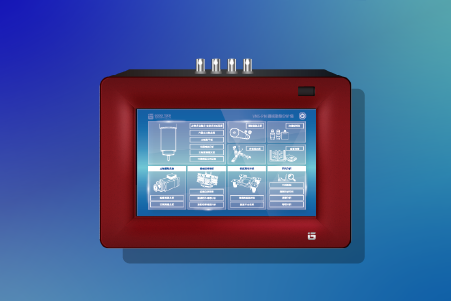Complex Structure of Machining Centers – How to Identify Anomalies?
Case|Complex Structure of Machining Centers – How to Identify Anomalies?The structure of machining centers is complex. Even a minor component failure can affect product quality. How can we quickly diagnose issues and ensure machining quality?
Process Characteristics of Machining Centers
Machining centers utilize motor power and belt-driven systems to rotate workpieces and cutting tools, performing cutting actions. The manufacturing process is assisted by digital computer controls to achieve greater precision and efficiency. Their applications are extensive, and in some processes, robotic arms replace manual labor to ensure precision. As machining processes become more sophisticated, the complexity of machining center components increases, with each part interacting with and affecting the others. If an anomaly occurs, it can compromise product quality. How can we ensure the quality of machining centers and prevent spindle wear and process failures?

Impact of Spindle on Machining Quality
Machining centers mainly consist of spindles, composite drive mechanisms, and drive movement systems. The spindle has the most significant impact on machining quality, making it the most critical component. Ensuring spindle quality allows better control of the equipment's overall state.
Different spindle types include direct-drive, gear-driven, belt-driven, and built-in spindles.
X-Axis Work Path Monitoring
The complexity of the machining center structure means that resonance between the metal casing and the worktable can impact product vibration or cause abnormal wear.
It's essential to confirm whether vibration anomalies occur in the X-axis work path during spindle operation and check if the screw slide rail has any related abnormal vibrations.
Impact of Robotic Arm Vibrations
Product damage may not solely be due to machining issues. In some cases, robotic arms are used to replace manual transport to ensure product precision.
Any anomalies during transport may lead to product damage or misalignment, making it crucial to monitor the robotic arm's operation as well.
Solutions and Monitoring
VMS-PM Mechanical Dynamic Analyzer
The VMS-PM mechanical dynamic analyzer can be used to diagnose and detect anomalies.
The analyzer helps monitor various components of the machining center.
It provides insights into spindle quality using vibration quality and dynamic balance measurements.
The "vibration quality during speed changes" function assesses the vibration of the X-axis work path, while the "spectrum analysis" function compares the dynamic signals of robotic arms.
Measurement Conditions

Measurement Description
# Spindle Quality: Vibration quality and dynamic balance measurement.
# X-Axis Work Path Vibration Record: X-axis movement, casing vs. worktable.
# Robotic Arm Dynamics Measurement: Ensuring consistent dynamic signals.
Measurement Conclusions
The VMS-PM Mechanical Dynamic Analyzer is specifically designed for machine tool equipment as a vibration measurement and analysis instrument. With various functions of the analyzer, it can quickly diagnose the condition of different machine tool components, helping to prevent premature spindle damage, extend component lifespan, and optimize processes by understanding the machine tool's condition, ultimately achieving machine intelligence.
VMS-PM Mechanical Dynamic Analyzer


